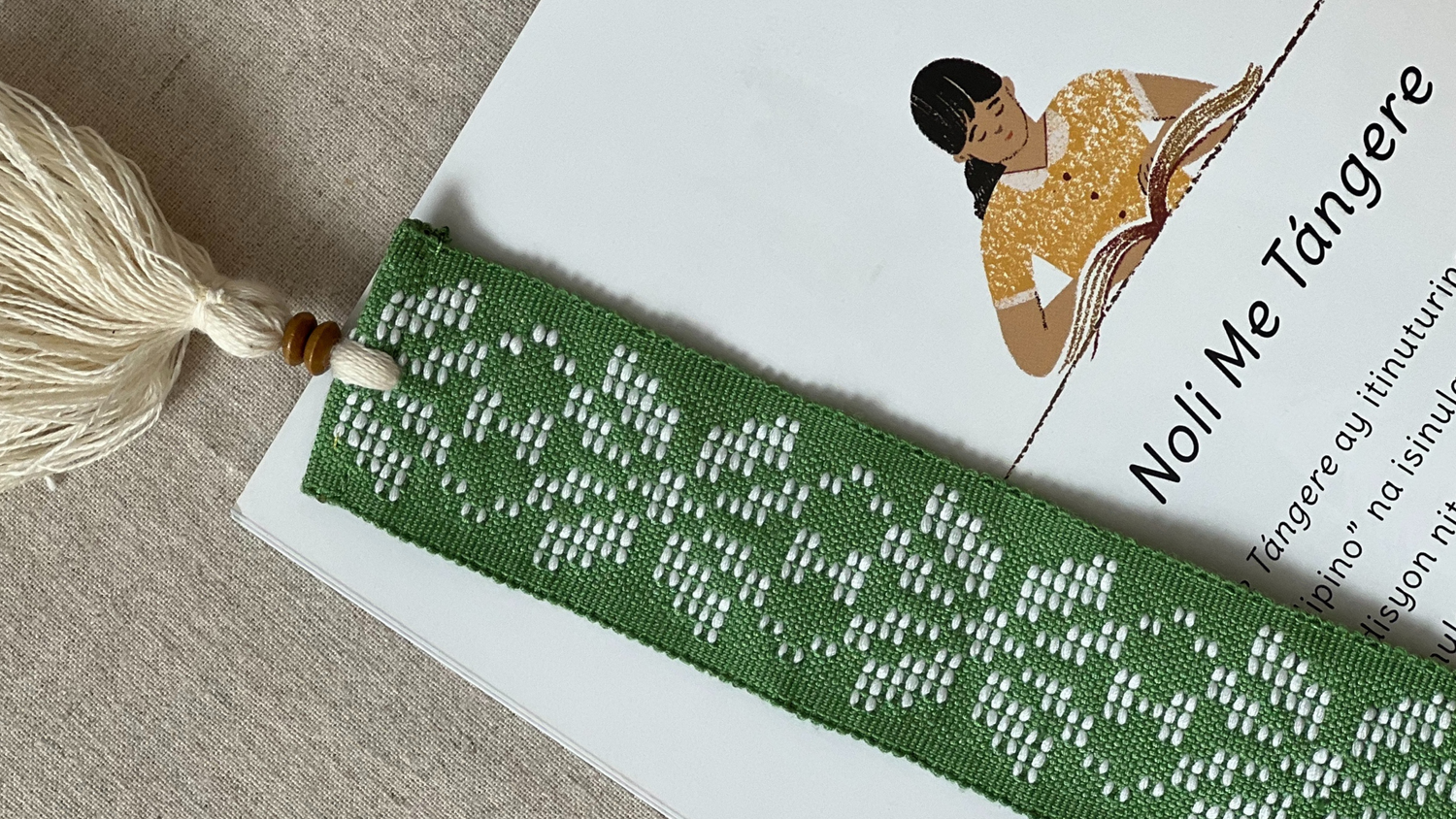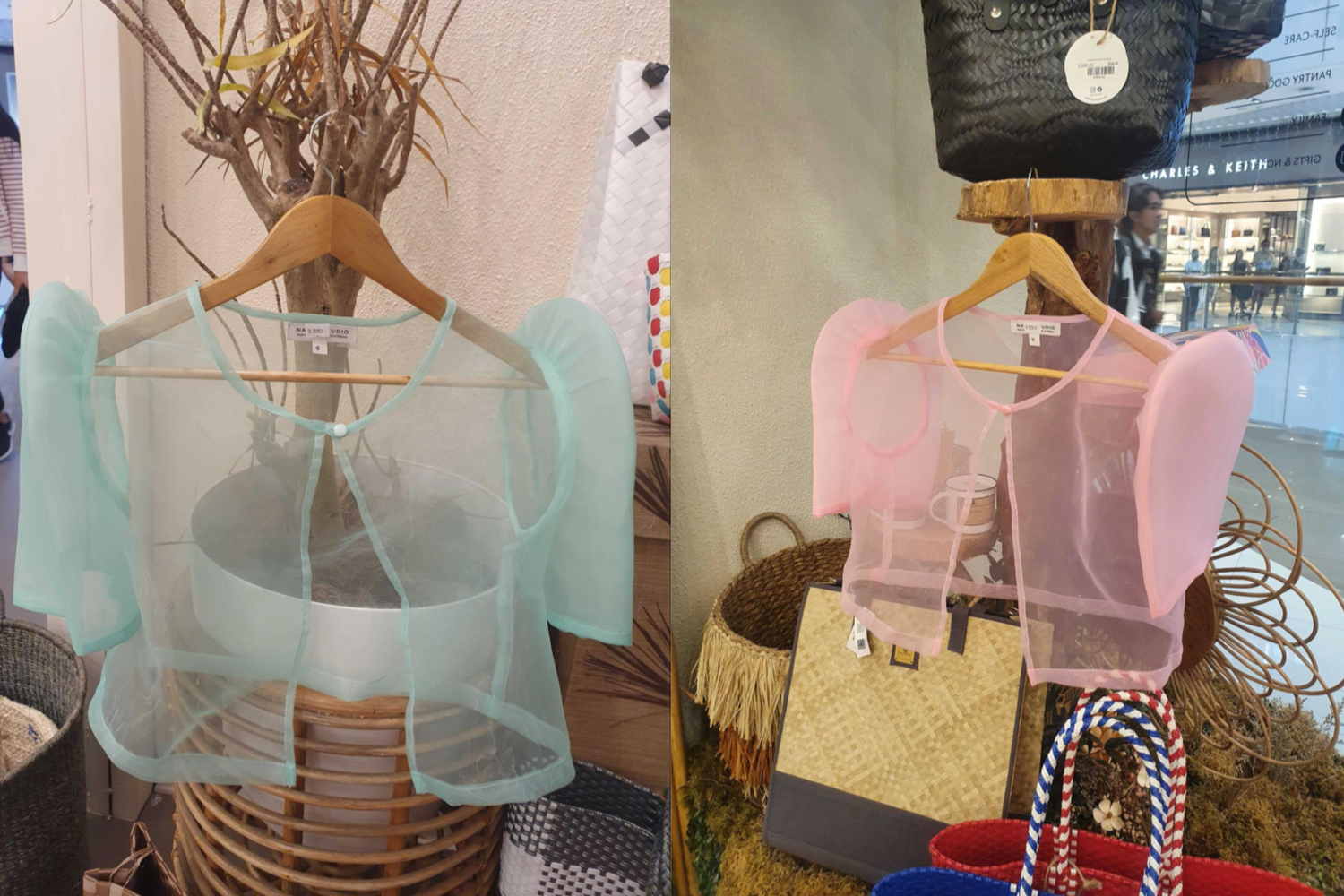Written by Mara Fabella
For many communities in the Philippines, weaving is not just a way to produce the clothing so central to their culture, but also a form of storytelling. The Tboli of the South Cotabato highlands in Mindanao are also known as the “dreamweavers.” They weave an abaca textile called the t’nalak that features intricate dyed imagery that the Tboli believe originate from their dreams. Because of this spiritual connection, the Tboli hold the t’nalak and their weaving practices in the highest regard, often taking several months just to finish a stretch of fabric and meticulously choosing the best plant sources to dye their fibers.

The origin of its design is what makes the t’nalak so unique compared to the many other rich garments of Mindanao. For the Tboli, the weaving process does not start with learned weaving patterns, but in the realm of dreams. Within each weaver’s dream, or damgo, they would encounter Fu Dalo, the female guardian spirit that shows them the designs that would eventually be woven into the t’nalak. During the weaving process, it is said that Fu Dalo would inhabit each individual yarn so that the weaver would have to be extra precise while both weaving and dyeing to avoid provoking her wrath. It is also tradition for the Tboli to leave offerings for Fu Dalo, like woven blouses and jewelry, around the weaving area. For Fu Dalo’s watchful eye over the weavers, she is known as the guardian of the t’nalak.
While garments such as the malong come in different hues, the t’nalak is known for having only three: black, white, and red. Black is the most dominant, as it serves as the overall background of the cloth, while red is used to accentuate the many patterns of the t’nalak, such as the diamond shapes that run lengthwise along the kumo, a rare variant of the t’nalak used as a wedding blanket. White has the most important purpose, as it is used for different motifs, like the human, crab, shield, lizard, or traditional frog motifs. The motifs vary with each t’nalak, depending on each design as dictated by Fu Dalo. Many Tboli women pair their t’nalak garments with colorful beads, jewelry, and ornate headwear.
The t’nalak is crafted from abaca fibers, which are derived from the stalk of an abaca, or banana plant. These fibers are incredibly thin and are painstakingly stripped from the stalk and sundried. They are woven using a backstrap loom, and this can take more than a month, as the weaver dreams of the fabric’s design. The textile is colored using a dyeing technique known as ikat, or resist-dyeing. Using ikat, the weaver coats sections of threads with a wax-resistant substance so that those areas remain untouched by the dye. The ikat process can be repeated as many times as needed to color the delicate and intricately constructed narratives told by the t’nalak.
Preserving the t’nalak is a matter of preserving the Tboli culture and its people. Artists and historians have tried to dissect the t’nalak motifs, but none have come quite close enough to replicating the elegant visual language woven by the Tboli. Today, the t’nalak remains an essential part of Philippine culture that shows both the artistry and very often spiritualism that goes into weaving native textiles.

Photo: NCCA Philippines
We are proud to work with the descendants of Lang Dulay, recipient of the National Living Treasures Award and Gawad as Manlilikha ng Bayan, to promote the t'nalak artform.
ADDITIONAL READING:
https://www.clothroads.com/woven-dreams-tnalak-ikat/
https://www.thetextileatlas.com/craft-stories/tnalak-weaving-philippines







